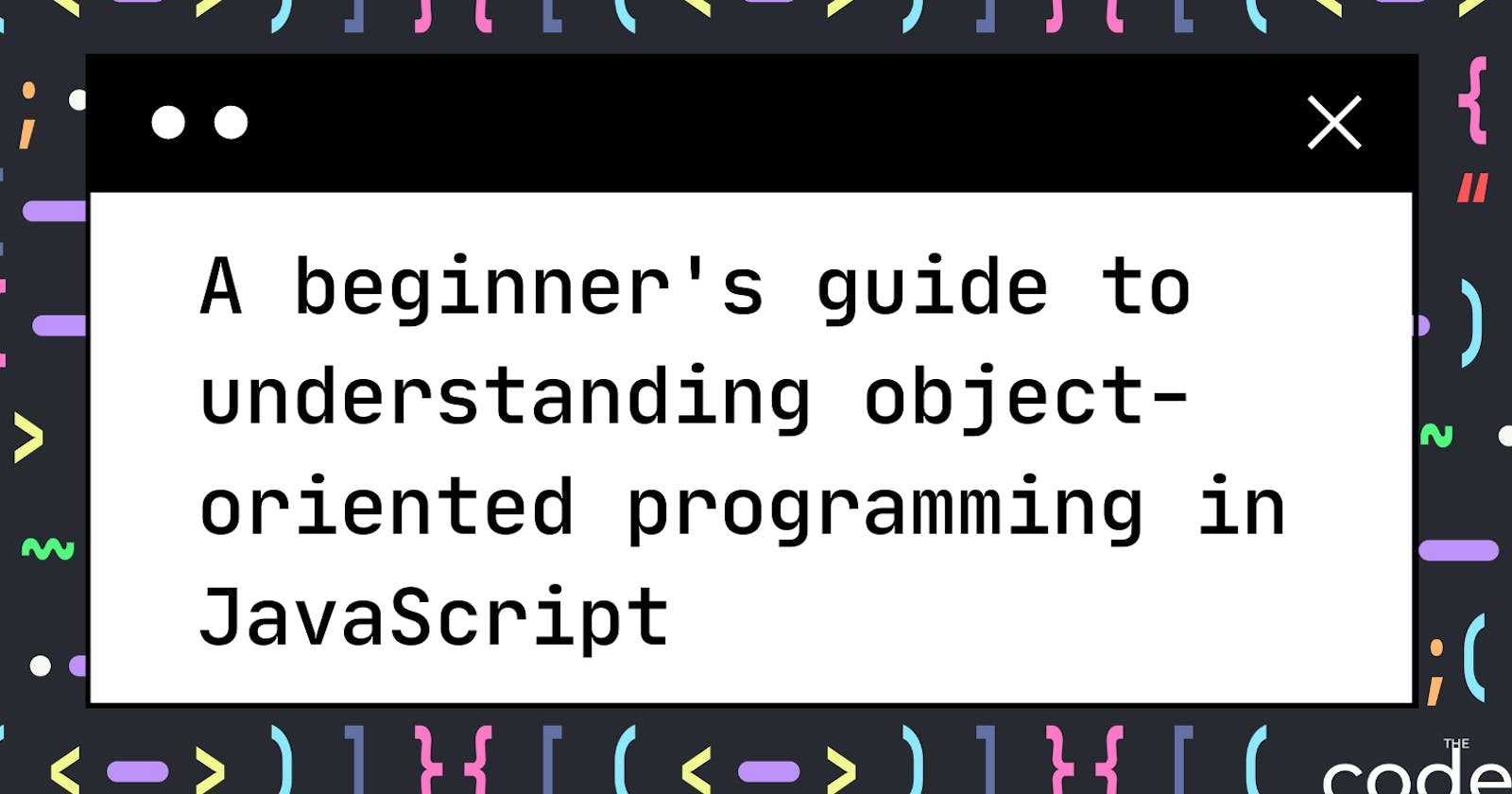A beginner's guide to understanding object-oriented programming in JavaScript
An introduction to object-oriented programming in JavaScript, including a look at how it works, its benefits and drawbacks, and how to use it.
Introduction
If you're starting out in web development, chances are you've heard of object-oriented programming (OOP). But what is it, exactly? And how can understanding OOP make you a better JavaScript programmer?
In this article, we'll take a look at what object-oriented programming is, how it works in JavaScript, why it's worth learning, we will also take a look at pros and cons of using it. By the end, you'll have a better understanding of how to use OOP concepts in your own projects.
What is OOP?
So what is object-oriented programming? In short, it's a way of organizing and structuring code so that it is easy to reuse and maintain. OOP is based on the concept of objects, which are self-contained units of code that can be easily reused.
Each object has its own properties and methods, which are functions that act on those properties. By creating objects with well-defined properties and methods, we can make our code more modular and easier to understand.
OOP in JavaScript
In JavaScript, objects are created using the keyword new. For example, we can create a new object called myObj like this:
let myObj = new Object();
myObj will now be an empty object, but we can start adding properties and methods to it. Let's say we want to give our object a property called name. We can do that like this:
myObj.name = "Bob";
Now our object has a name! We can access this property by using myObj.name, which would return "Bob".
We can also add methods to our object. A method is just a function that is associated with an object. For example, we could add a method to our myObj object that prints the object's name to the console:
myObj.printName = function() {
console.log(this.name);
}
This method will take no arguments, but it will print the value of the name property to the console. To call this method, we would use myObj.printName().
What is inheritance and how to use it in JavaScript
If we have a number of objects with similar properties and methods, we can define these once in a "parent" object and then inherit them in "child" objects. This is called inheritance, and it's a powerful tool that can make your code more DRY (Don't Repeat Yourself).
In JavaScript, inheritance is achieved using prototypes. A prototype is an object that is used as a template for creating new objects. When we create a new object, we can specify which prototype we want to use as a base.
For example, let's say we have a parent object called Animal and we want to create a child object called Dog. We could do that like this:
let Animal = {
name: "",
speak: function() {
console.log("I am an animal!");
}
}
let Dog = Object.create(Animal);
Dog.name = "Fido";
Now our Dog object will have all the same properties and methods as the Animal object, plus any properties and methods we define specifically for the Dog object.
We can test this by calling the speak method on our Dog object:
Dog.speak(); // prints "I am an animal!" to the console
Pros of using OOP
There are many benefits of using Object Oriented Programming (OOP). One benefit is that it can help to promote code re-usability. This means that once you have written a piece of code, you can easily use it again in other programs simply by creating a new object. This can save you a lot of time and effort as you don’t have to keep rewriting the same code.
Another benefit of OOP is that it can make your code easier to read and understand. This is because you can give your objects clear names that describe what they do. This can make it much easier for other people to work with your code or for you to come back to your code at a later date and understand what it is doing.
Finally, OOP can also help you to manage complexity in your code. This is because you can break your code down into small, manageable objects rather than having one huge, complicated codebase. This can make it much easier to spot errors and to make changes to your code.
Cons of using OOP
However, there are also some disadvantages of using OOP. One disadvantage is that it can take longer to write OOP code than traditional code. This is because you have to think about how to structure your code into objects and then write the code for each object. This can be time-consuming and it can be easy to make mistakes.
Another disadvantage of OOP is that it can be difficult to debug. This is because it can be hard to track down errors in your code when it is spread out across multiple objects.
Finally, OOP code can also be more difficult to maintain. This is because you might need to make changes to multiple objects if you want to make a small change to your code. This can be time-consuming and it can lead to errors.
Summary
As you can see, object-oriented programming can be a great way to organize and structure your code. It can make your code more reusable and easier to maintain. If you're just starting out in web development, take some time to learn more about OOP in JavaScript. It will undoubtedly make you a better programmer!

